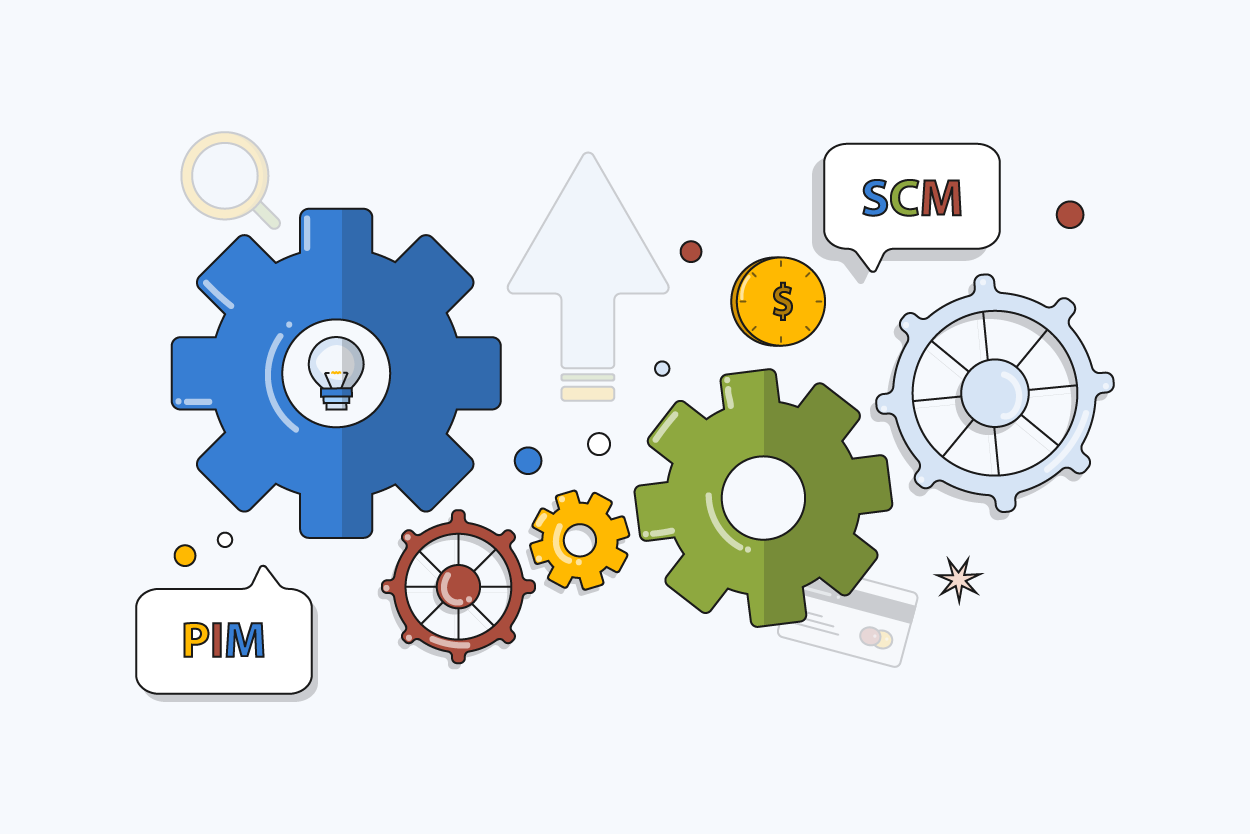Blog » How a PIM Complements Your Supply Chain Management Strategy

Your product information lives in five spreadsheets, your warehouse uses outdated specs, and customers receive wrong items because someone updated descriptions but forgot SKUs. This chaos costs money — and it's fixable.
Data inconsistencies cost businesses $15 million annually — 40% from supply chain disruptions alone. Product Information Management (PIM) converts chaotic information systems into precision operations delivering quantifiable results: 40% cost reduction, 60% customer satisfaction improvement.
Data accuracy determines business survival. Companies implementing integrated product information management strategy achieve supply chain excellence through strategic information control, not technology adoption.
Product Information Drives Purchase Decisions
87% of customers need product details before buying. Without accurate product information supply chain operations break down: suppliers get confused specs, warehouses ship wrong items, customer service can't answer questions.
The global PIM market will hit $63.8 billion by 2030, growing 21% annually. Companies invest because messy product data bleeds revenue.
PIM Specializes Where Other Systems Fail
ERP systems handle transactions. Inventory platforms manage logistics. PIM orchestrates comprehensive product information across complex supply chains — a specialization other tools cannot match despite overlapping capabilities.
PIM systems operate as information command centers: collecting data from multiple sources, enriching product attributes, distributing seamlessly across touchpoints. This eliminates information degradation between departments — the costly telephone-game destroying operational efficiency.
Design specification updates trigger immediate supplier notifications, marketing campaign adjustments, sales representative briefings. Zero detective work hunting accurate data—stakeholders access identical, verified information instantly.

Information Gaps Cost Real Money
Supply chains coordinate dozens of stakeholders managing thousands of products with millions of attributes. Shanghai suppliers to Chicago distribution centers require identical, real-time data preventing operational failures.
Isolated data silos create expensive cascading problems. Packaging receives specification changes after printing 10,000 incorrect units. Sales promises nonexistent features. Customer service manages angry calls about product mismatches.
PIM eliminates these disasters through universal data language. Suppliers receive exact specifications, manufacturers understand precise requirements, distributors access current inventory details, retailers represent products accurately.
Data Accuracy Reduces International Costs
International businesses navigate complex regulatory requirements and country-specific formats. Products must comply with local laws, making global compliance a critical supply chain challenge. Inaccurate data generates costly returns, delays, logistics expenses.
PIM manages country-specific formats while optimizing information efficiency. Centralizing product data in industry-standard classifications reduces operational costs, enables cost-effective international expansion beyond traditional market limitations.
Real-time synchronization propagates changes instantly across connected systems. Supplier delays immediately trigger product flags, stakeholder notifications, alternative sourcing activation—converting reactive operations into competitive advantages.
Strategic Data Management Optimizes Operations
Accurate product information directly impacts operational efficiency and customer satisfaction metrics. PIM enables advanced audience segmentation, allowing supply chain managers to prioritize deliveries and optimize logistics for time-sensitive products.
Centralized access ensures best-selling products maintain proper stock levels, delivery deadlines achieve consistent fulfillment. This precision reduces return rates through expectation accuracy — comprehensive descriptions, specifications, images representing actual physical items.
Results include elevated customer satisfaction, reduced buyer's remorse, stronger relationships, organic word-of-mouth marketing. Seamless information flow from suppliers through organizations to customer touchpoints reinforces brand reliability at every interaction.
Integration Generates Measurable Returns
Modern PIM solutions provide robust APIs and pre-built connectors for business applications — ERP platforms, CRM tools, marketing automation software. Connectivity ensures automatic updates across technology stacks, maintaining universal consistency without manual intervention.
Implementation success requires measuring operational efficiency and customer satisfaction indicators. Critical metrics: product data error reduction, catalog creation time savings, supplier response improvements, return rate decreases, cross-selling opportunity increases. Direct savings: reduced manual entry, fewer corrections, improved efficiency. Indirect benefits: customer satisfaction gains, enhanced reputation, increased sales opportunities. Companies achieve ROI within 6-12 months through quantifiable operational improvements.
Success Metrics for Your Supply Chain Management Strategy
Track these improvements:
- Higher order accuracy rates
- Increased customer satisfaction
- Lower return rates
- Faster time-to-market
- Quicker supplier onboarding
- Faster customer service resolution

Information is Your New Currency — Spend it Wisely
Every day without integrated PIM strategy costs money you'll never recover. While competitors struggle with spreadsheet chaos, smart businesses gain unfair advantages through strategic information control.
The supply chain leaders of tomorrow aren't just moving products faster — they're moving accurate information instantly. Your next customer conversion depends on whether your product data works for you or against you.
Stop managing information. Start mastering it.
Ready to transform product information chaos into competitive advantage?
Contact PIMinto to streamline your supply chain, reduce operational costs, and accelerate growth.
Modified on: 07/18/2025